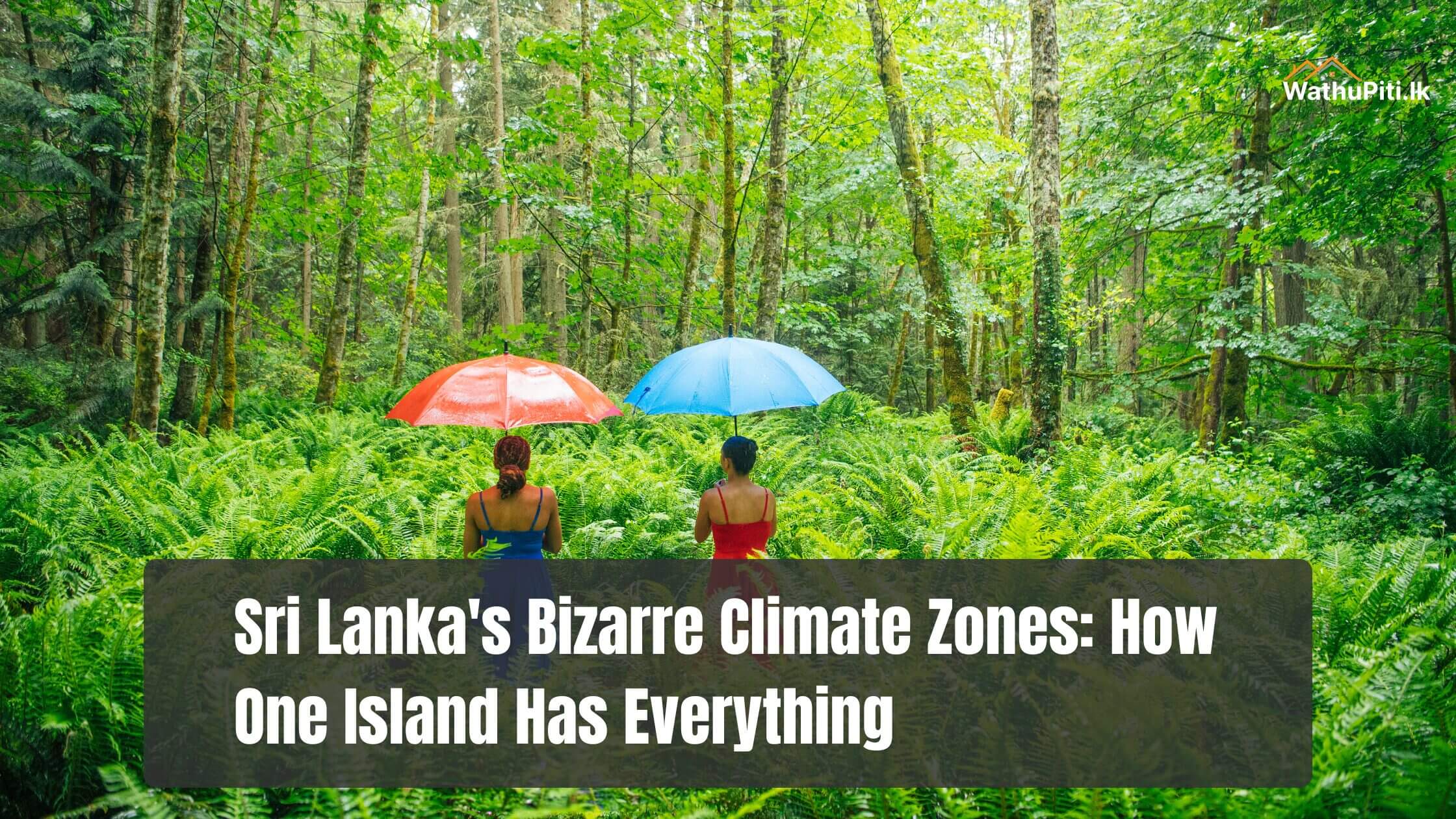
Sri Lanka’s Bizarre Climate Zones: How One Island Has Everything
Sri Lanka may be a small island, but it boasts an incredible variety of climates packed into its 65,610 square kilometers. From tropical beaches to misty highlands, dry arid plains to lush rainforests, this diversity makes the island a dream destination for travelers and nature lovers alike.
1. The Coastal Belt – Tropical Paradise
The coastal regions of Sri Lanka, such as Galle, Mirissa, and Trincomalee, experience a hot and humid tropical climate throughout the year. With warm temperatures ranging from 25°C to 32°C, these areas are perfect for beach lovers. Monsoon patterns bring heavy rains to different coasts at different times – the southwest monsoon (May to September) affects the west and south, while the northeast monsoon (October to January) brings rain to the east coast.
2. The Central Highlands – Cool and Misty Escape
Traveling inland from the coast, you’ll notice a drastic shift in temperature and atmosphere. The hill country, including Nuwara Eliya, Ella, and Hatton, enjoys a cool, temperate climate with temperatures dropping to 10°C or lower at night. Mist-covered mountains, waterfalls, and tea plantations define this region, offering a refreshing contrast to the island’s tropical heat. The highlands are also where Sri Lanka gets most of its rainfall, especially in the wet season.
3. The Dry Zone – Sun-Soaked Plains
Occupying most of northern and eastern Sri Lanka, the Dry Zone includes cities like Anuradhapura, Polonnaruwa, and Trincomalee. These areas receive less rainfall and have high temperatures exceeding 35°C during the dry months. However, large reservoirs and irrigation systems have helped sustain agriculture in these regions for centuries. Wildlife thrives in this semi-arid climate, making it the perfect habitat for elephants and leopards in national parks like Wilpattu and Yala.
4. The Rainforests – Lush Green Canopies
Sri Lanka’s wet zone rainforests, such as Sinharaja Forest Reserve, receive heavy rainfall throughout the year. These forests house a rich variety of flora and fauna, including endemic species like the purple-faced langur and Sri Lanka blue magpie. High humidity, constant rainfall, and dense vegetation make this climate zone unique and essential for biodiversity conservation.
5. Microclimates – Surprising Weather Variations
Thanks to Sri Lanka’s diverse geography, microclimates exist within larger climate zones. For example, Kandy is located in the central highlands but has a warmer climate due to its lower elevation. Meanwhile, Jaffna, despite being in the dry zone, experiences occasional rainfall due to shifting monsoon patterns.
A Small Island with Big Climate Diversity
Sri Lanka’s climate diversity allows visitors to experience summer and winter-like conditions in a single day. Whether you want to relax on sunlit beaches, trek through misty mountains, or explore ancient ruins in the dry plains, Sri Lanka has a perfect climate for every adventure.


